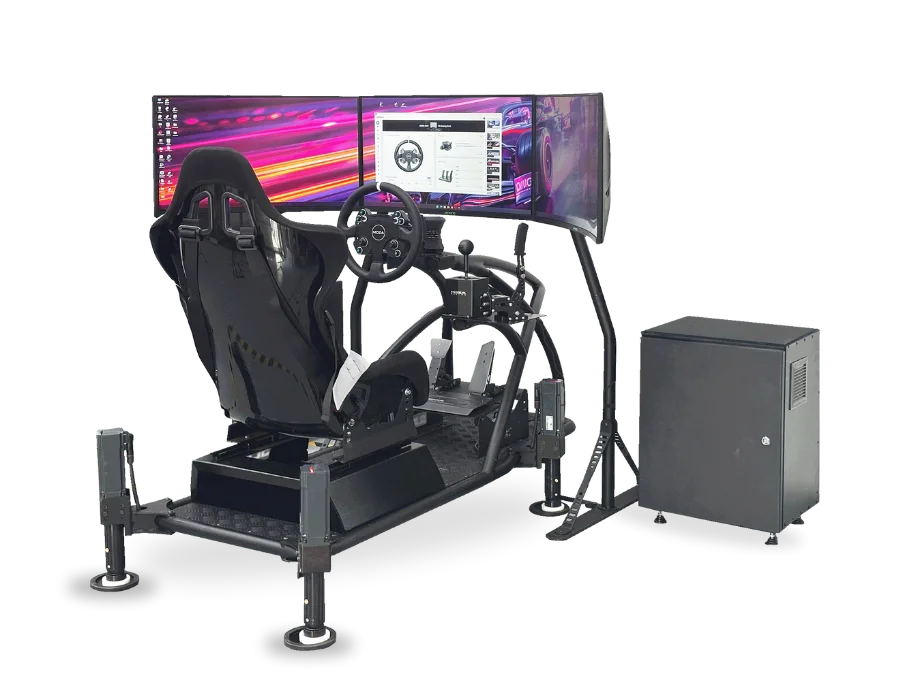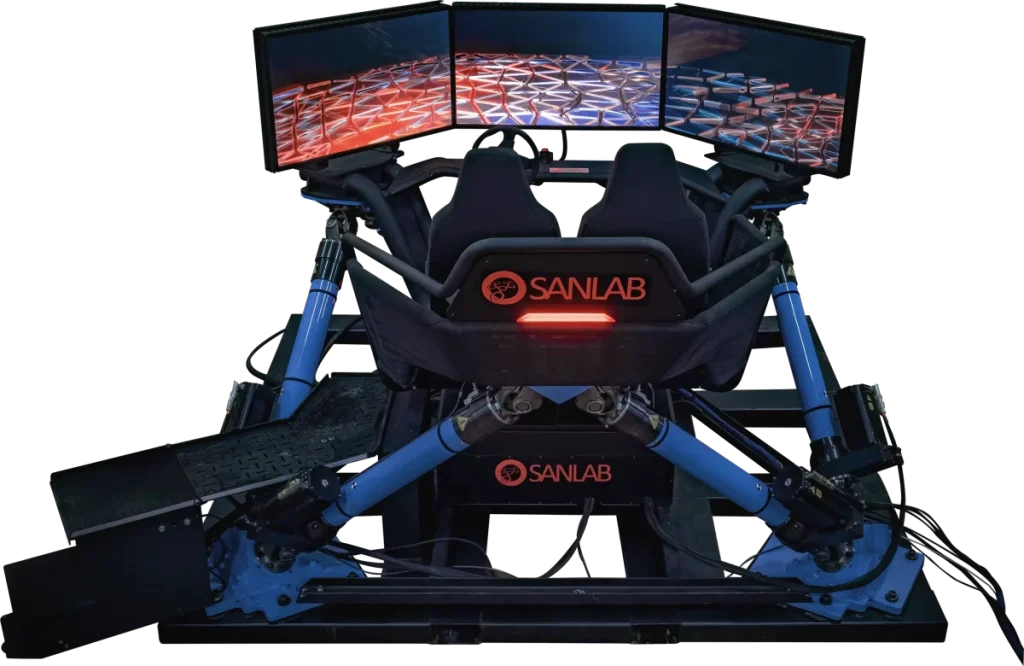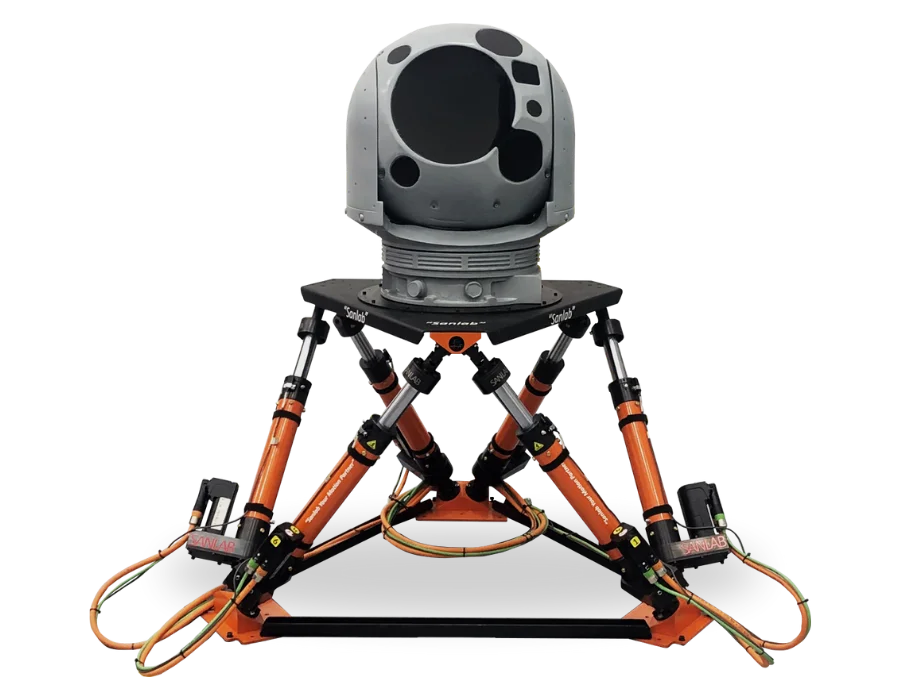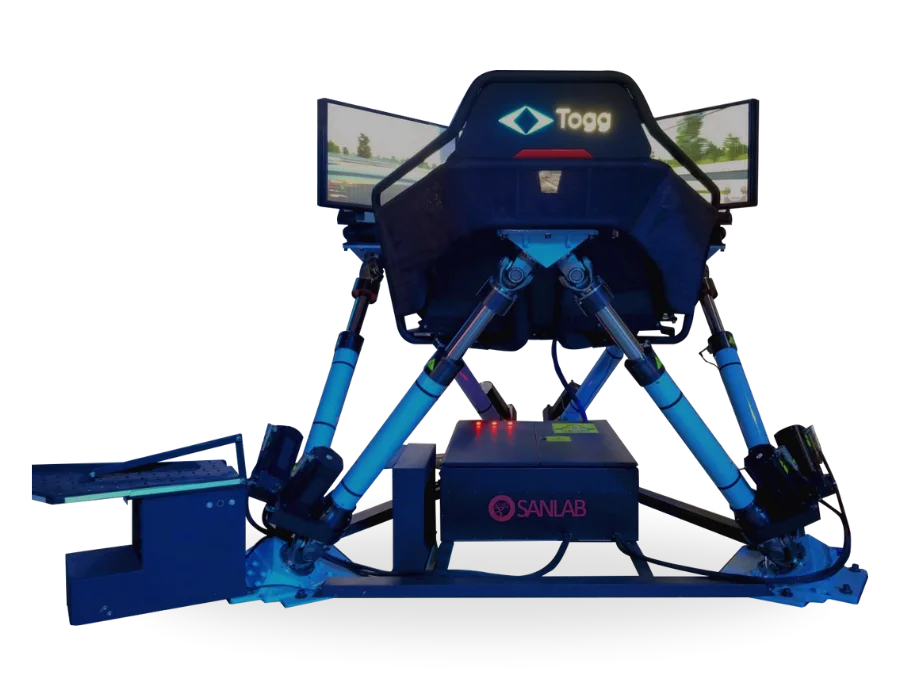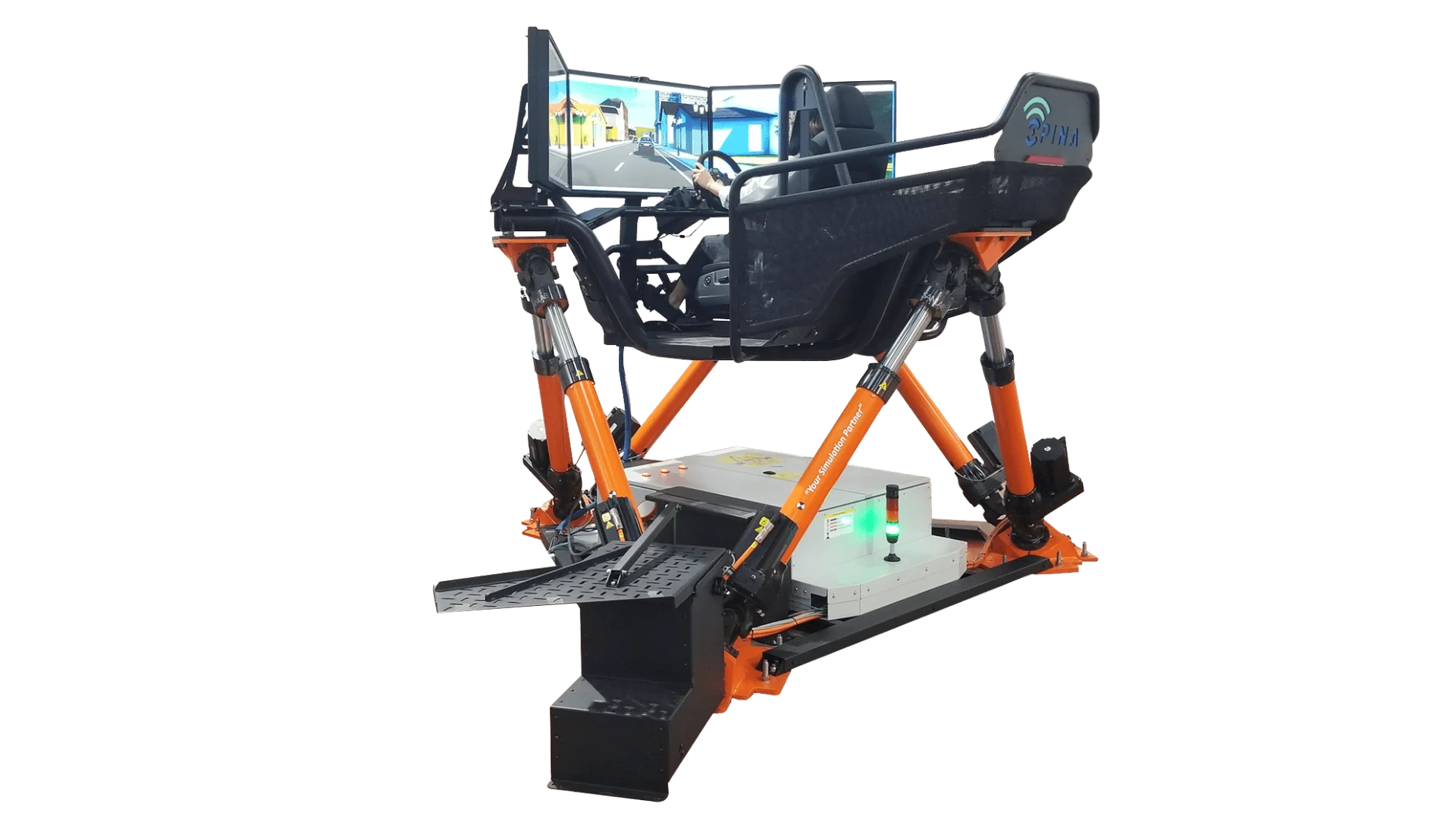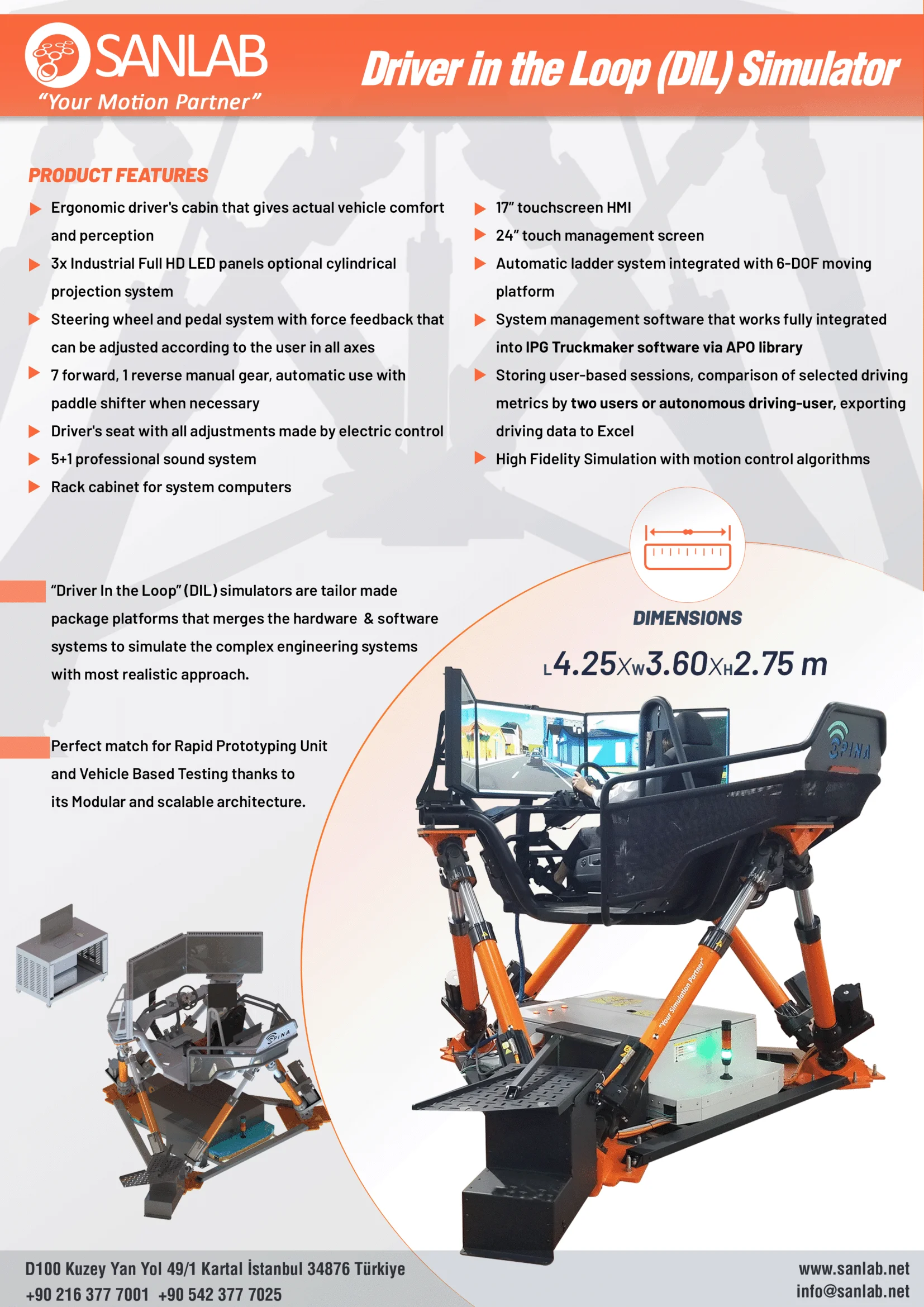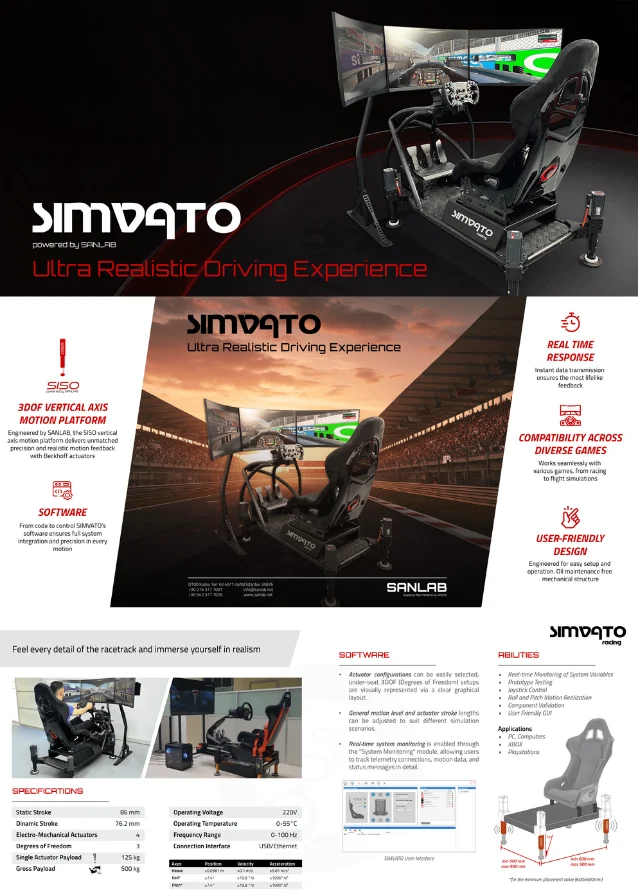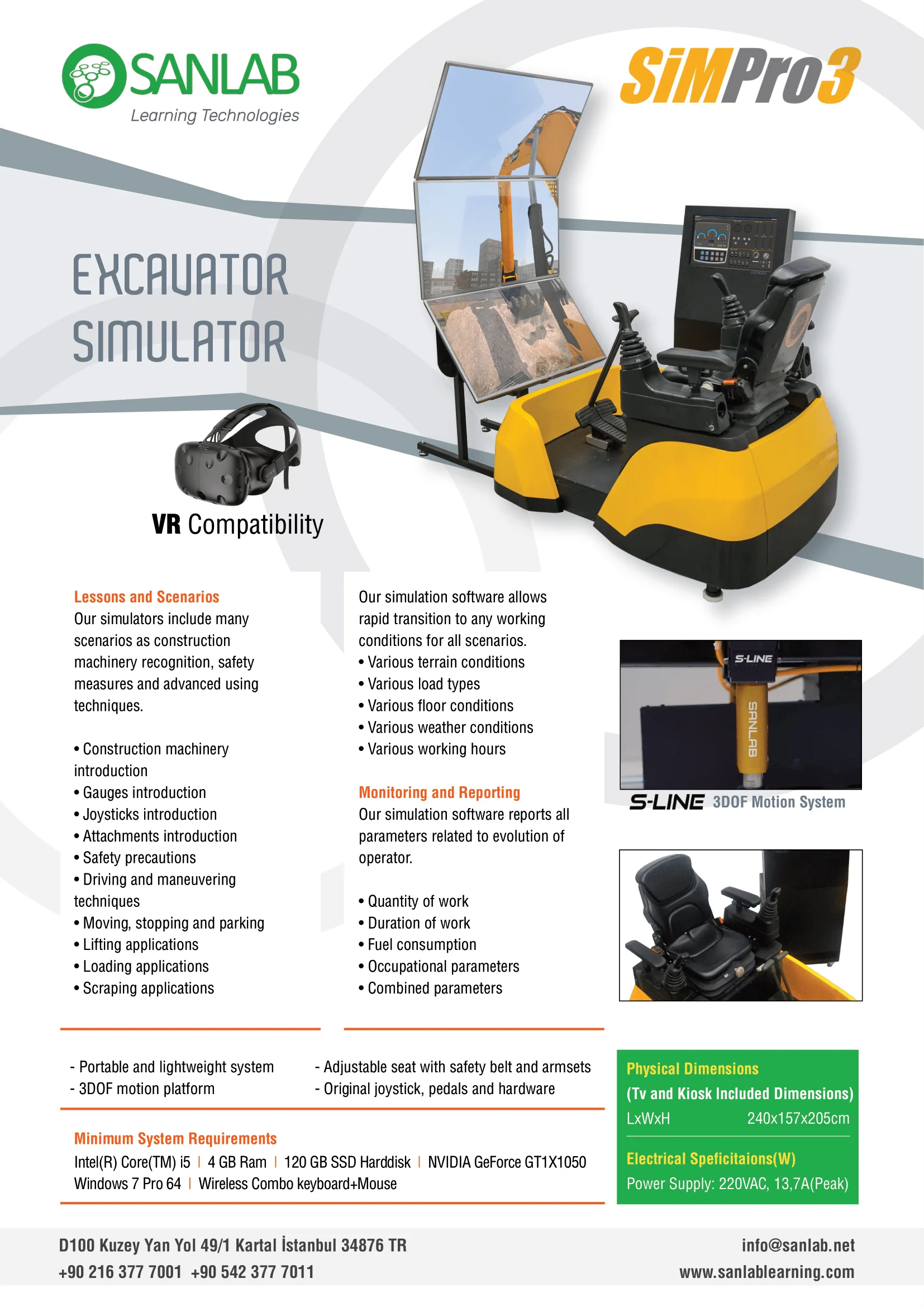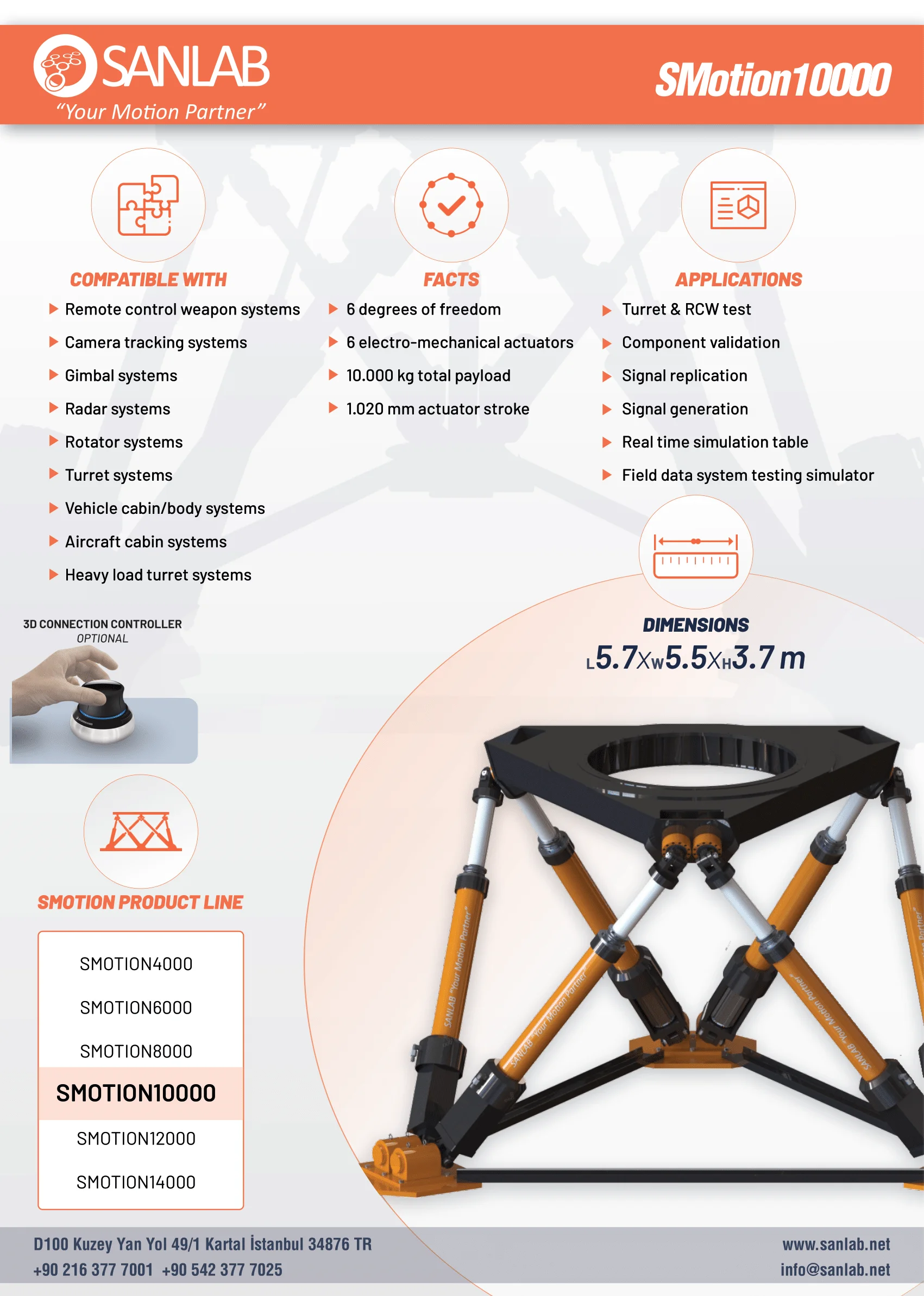Platform-Based Solutions for Precision Testing
Explore how advanced simulation technologies enhance operator training and system testing across sectors. These solutions combine high-fidelity environments with scalable platforms—enabling precise evaluation, repeatable testing, and focused skill development.
Testing & Simulation Solutions
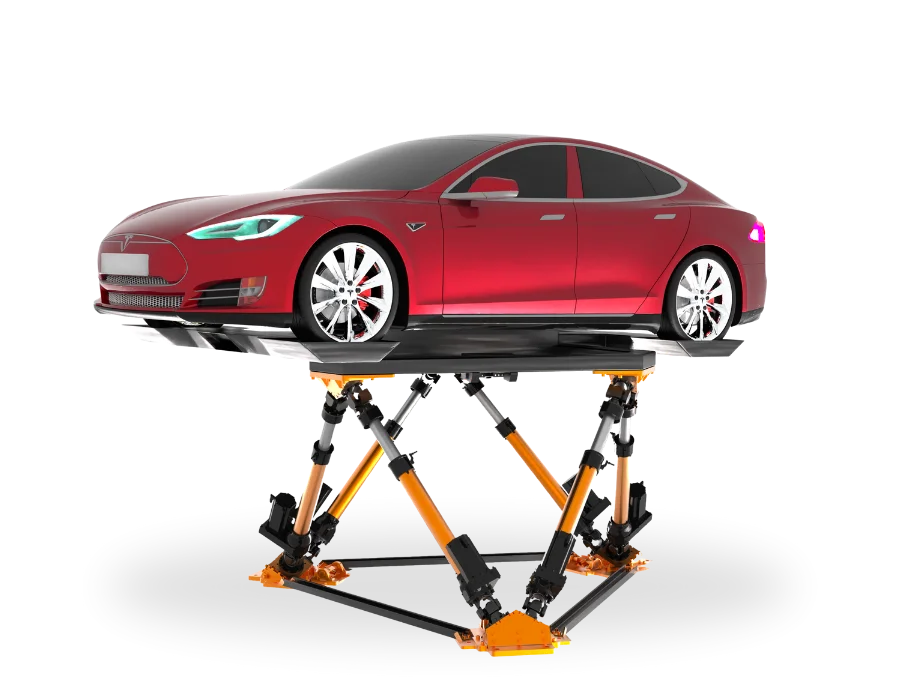
Motion Platforms
Motion-Based Testing Applications
Motion test systems replicate real-world dynamics to evaluate how vehicles and components behave under realistic operating conditions.
By simulating movement, vibration, and driving environments, these platforms help assess performance, durability, and system response—playing a key role in product testing and development across automotive, aerospace, and defense sectors.
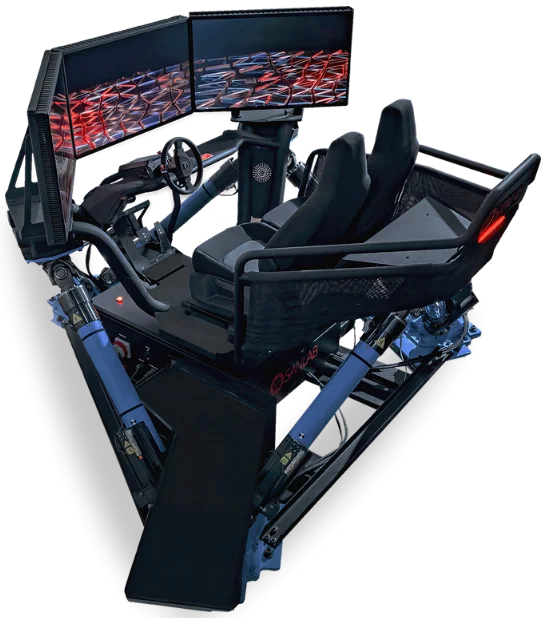
Driver-in-the-Loop Simulator
Automotive Simulation & Testing Platform
Driver-in-the-Loop (DIL) simulators provide a controlled environment for both driver training and vehicle system testing under realistic automotive conditions.
These platforms enable the evaluation of handling, safety, and dynamic behavior while supporting driver-involved development of autonomous and advanced mobility systems.
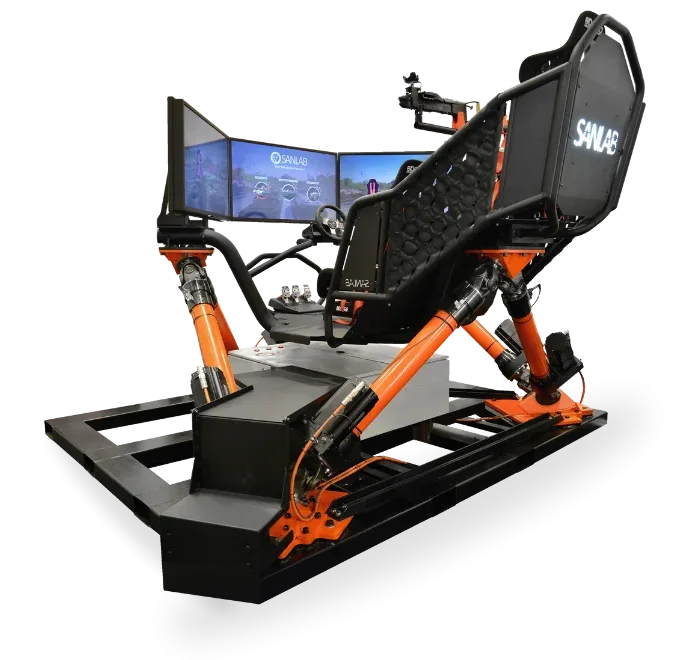
Military Vehicle Simulator
Advanced Tactical Testing & Simulation
Military vehicle simulators provide a controlled environment to train personnel in tactical operations, route navigation, and battlefield coordination.
These systems improve decision-making, vehicle handling, and operational readiness—supporting mission planning, crew training, and tactical response under realistic combat scenarios.
Need help finding the right solution?
Contact us for expert support.
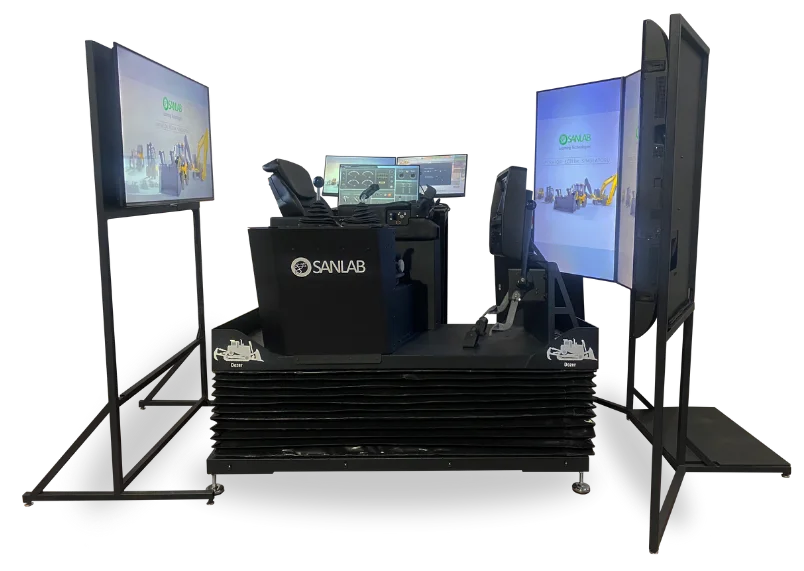
SimPro Simulation Series
Heavy Equipment Simulation
Heavy equipment simulators provide a realistic and safe environment for operator skill development in construction and logistics fields.
These systems simulate real machine controls and terrain interactions—supporting training in excavation, lifting, and load handling operations with high fidelity and repeatability.
